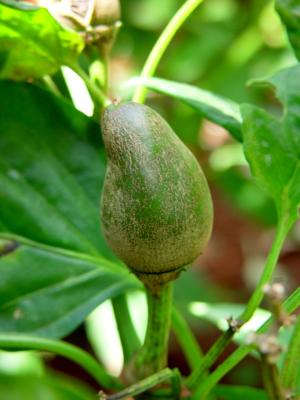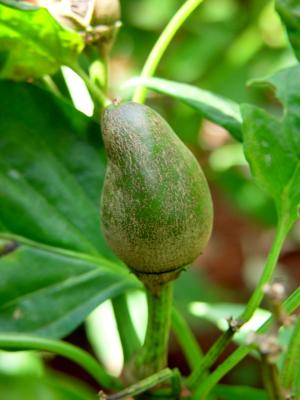

Broad mite (Polyphagotarsonemus latus)
Broad mites are tiny (0.1-0.2 mm long) cannot be seen with the naked eye, and are even difficult to detect with a hand lens. In addition, they often disappear before the damage is noticed. Therefore an attack by broad mites is usually detected by the symptoms of damage. Broad mite attacks mainly the growing point and the underside of young leaves causing hardening and distortion. Severe infestations inhibit new stem growth, with consequent reduction in fruit production. Broad mite damage may be confused with injury caused by some herbicides because in both cases the leaves become claw-like with prominent veins. Grey or bronze scar tissue between the veins on the underside of the leaves distinguishes mite from herbicide damage. For early detection of damage inspect the growing point of the tree regularly. This is important to allow control the pest before serious distortion of terminal growth occurs.
- Natural enemies, in particular predatory mites often provide adequate control of mites. Therefore, the use of acaricides or insecticides that also kill mites should be restricted.
- Sulphur, insecticidal oils or soaps are effective against mites. However, sulphur is reported to be toxic to predatory mites.
